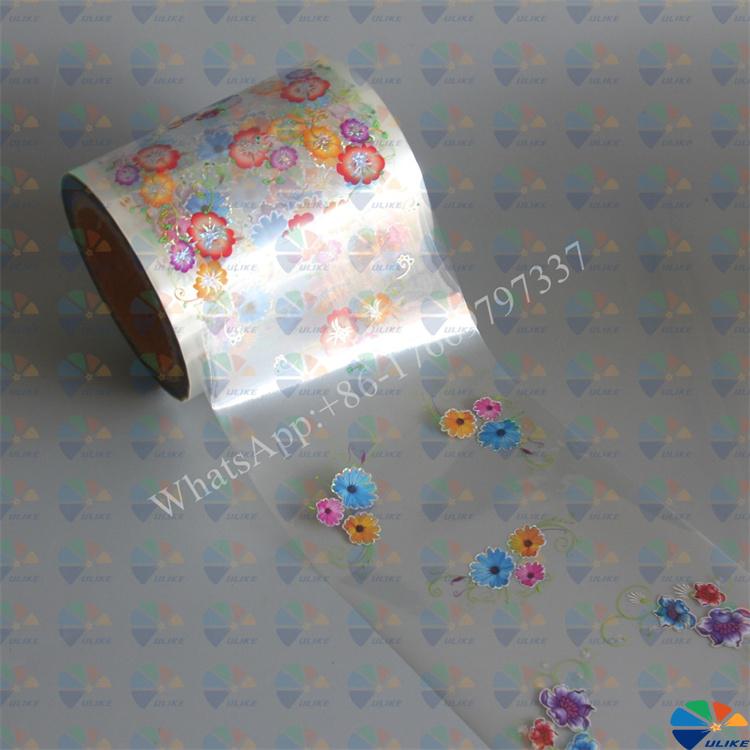Three aspects to pay attention to in thermal transfer design draft
1-Three aspects to pay attention to in
thermal transfer design draft
The thermal transfer industry is an emerging printing technology, and making printing design drafts is an important process. In the process of making printing design drafts, special attention should be paid to the following three aspects:
Three aspects to pay attention to in
thermal transfer design drafts
2-Appropriate bleed size
The appropriate layout bleed size is generally controlled within 3mm, so as to avoid the phenomenon of printing blank space. In the process of making design drafts, Adobe InDesign, Coreldraw, Photoshop and other application software are generally used, and the bleed prompt line, character safety line or warning frame line should be set first.
3-
Thermal transfer spot color printing
Many customers always hope that their thermal transfer products can stand out from many printed products, and the commonly used technique is to use gold, silver and spot colors in the printing design draft for printing, which can not only improve the product grade, but also enhance its own market value.
Since gold, silver and spot colors cannot be adjusted using cymk, they are processed in spot colors. For this type of printing design, a separate film is produced for it and printed.
4- Inspection and proofreading is the key
Before confirming the thermal transfer design, it is necessary to do a good job of inspection and proofreading. This link is very critical. If the content and specifications of the printing design are not checked and proofread in time, it is easy to make mistakes, which may bury hidden dangers for the subsequent thermal transfer process. For this reason, the following two points must be done:
1. Bleeding inspection
Bleeding is the color position or graphic that is naturally connected to the finished product outside the finished product line. Generally, the bleeding position is set to 3mm per side; if you are printing books, you must also add the spine position (the size of the spine position should be determined according to the number of visible inner pages and the thickness of the paper).
2. Mode inspection
It is recommended to check the composition structure of fill, outline, picture and text. Once the structure of RGB mode is found, it should be converted to CMYK mode. Only with unified format can the printed products with consistent specifications be printed, otherwise the expected printing effect cannot be achieved.
![af]() Afrikaans
Afrikaans![sq]() Albanian
Albanian![am]() Amharic
Amharic![ar]() Arabic
Arabic![fr]() French
French![es]() Spanish
Spanish![ru]() Russian
Russian![de]() German
German![hy]() Armenian
Armenian![it]() Italian
Italian![ja]() Japanese
Japanese![ko]() Korean
Korean![pt]() Portuguese
Portuguese![hi]() Hindi
Hindi![az]() Azerbaijani
Azerbaijani![ro]() Romanian
Romanian![pl]() Polish
Polish![th]() Thai
Thai![el]() Greek
Greek![eu]() Basque
Basque![en]() English
English![zh-CN]() Chinese (Simplified)
Chinese (Simplified)![zh-TW]() Chinese (Traditional)
Chinese (Traditional)![be]() Belarusian
Belarusian![bn]() Bengali
Bengali![bs]() Bosnian
Bosnian![bg]() Bulgarian
Bulgarian![ca]() Catalan
Catalan![ceb]() Cebuano
Cebuano![ny]() Chichewa
Chichewa![co]() Corsican
Corsican![hr]() Croatian
Croatian![cs]() Czech
Czech![da]() Danish
Danish![nl]() Dutch
Dutch![eo]() Esperanto
Esperanto![et]() Estonian
Estonian![tl]() Filipino
Filipino![fi]() Finnish
Finnish![fy]() Frisian
Frisian![gl]() Galician
Galician![ka]() Georgian
Georgian![gu]() Gujarati
Gujarati![ht]() Haitian Creole
Haitian Creole![ha]() Hausa
Hausa![haw]() Hawaiian
Hawaiian![iw]() Hebrew
Hebrew![hmn]() Hmong
Hmong![hu]() Hungarian
Hungarian![is]() Icelandic
Icelandic![ig]() Igbo
Igbo![id]() Indonesian
Indonesian![ga]() Irish
Irish![jw]() Javanese
Javanese![kn]() Kannada
Kannada![kk]() Kazakh
Kazakh![km]() Khmer
Khmer![ku]() Kurdish (Kurmanji)
Kurdish (Kurmanji)![ky]() Kyrgyz
Kyrgyz![lo]() Lao
Lao![la]() Latin
Latin![lv]() Latvian
Latvian![lt]() Lithuanian
Lithuanian![lb]() Luxembourgish
Luxembourgish![mk]() Macedonian
Macedonian![mg]() Malagasy
Malagasy![ms]() Malay
Malay![ml]() Malayalam
Malayalam![mt]() Maltese
Maltese![mi]() Maori
Maori![mr]() Marathi
Marathi![mn]() Mongolian
Mongolian![my]() Myanmar (Burmese)
Myanmar (Burmese)![ne]() Nepali
Nepali![no]() Norwegian
Norwegian![ps]() Pashto
Pashto![fa]() Persian
Persian![pa]() Punjabi
Punjabi![sm]() Samoan
Samoan![gd]() Scottish Gaelic
Scottish Gaelic![sr]() Serbian
Serbian![st]() Sesotho
Sesotho![sn]() Shona
Shona![sd]() Sindhi
Sindhi![si]() Sinhala
Sinhala![sk]() Slovak
Slovak![sl]() Slovenian
Slovenian![so]() Somali
Somali![su]() Sudanese
Sudanese![sw]() Swahili
Swahili![sv]() Swedish
Swedish![tg]() Tajik
Tajik![ta]() Tamil
Tamil![te]() Telugu
Telugu![tr]() Turkish
Turkish![uk]() Ukrainian
Ukrainian![ur]() Urdu
Urdu![uz]() Uzbek
Uzbek![vi]() Vietnamese
Vietnamese![cy]() Welsh
Welsh![xh]() Xhosa
Xhosa![yi]() Yiddish
Yiddish![yo]() Yoruba
Yoruba![zu]() Zulu
Zulu


